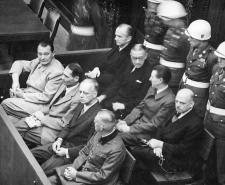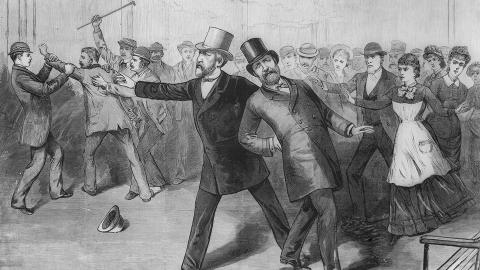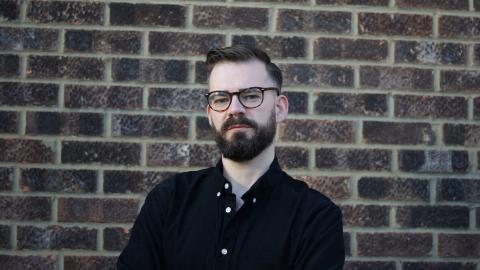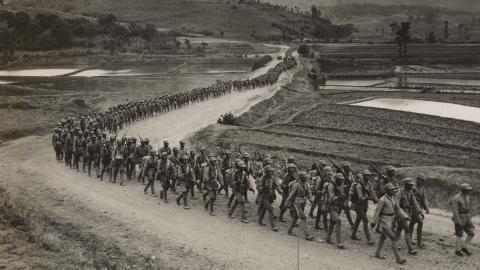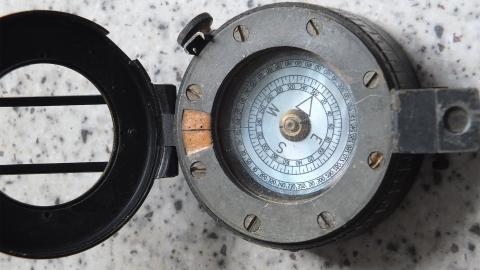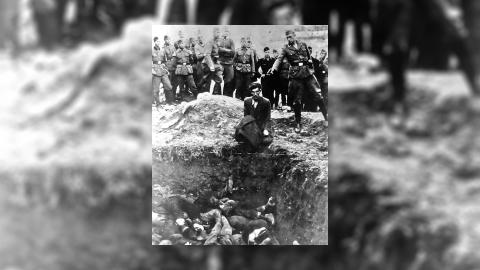
Josef Mengele: Nazi Germany's 'Angel of Death'
Josef Mengele carried out abhorrent experiments on thousands of inmates at Auschwitz. Learn more about the Angel of Death in this bone-chilling article.
Image: Josef Mengele (C) stands with commandants of Auschwitz I Richard Baer (L) and Rudolf Höss (R) | Public Domain
Josef Mengele is, without a doubt, one of the most notorious figures of the Holocaust. Known colloquially as the Angel of Death, Mengele contributed to sending some 400,000 people to their death at Auschwitz concentration camp.
What’s more, Mengele also took a leading role in the barbaric 'medical' experiments which took place at the camp, torturing and killing thousands of victims in the process. Many of these were children. Despite these atrocities, Mengele was never brought to justice.
Even so, our team at Sky HISTORY has been able to piece together Mengele’s diabolical activities through eye-witness accounts, survivor testimonies and physical evidence found at Auschwitz. Read on to learn about this appalling story of cruelty and terror.
Innocuous beginnings
Josef Mengele was born on 16th March 1911 in the Bavarian town of Günzburg in southern Germany. Despite the economic crisis that gripped the country at the time, Mengele’s father owned a prosperous farming machinery business. As such, he enjoyed a privileged and happy upbringing.
It wasn’t long before Mengele’s fascist tendencies came to the fore, however. In 1931, he joined the Stahlheim, which was the paramilitary division of the German National People’s Party, later to be absorbed by the NSDAP (Nazi Party).
During this time, he earned several medical and physical anthropology degrees in various universities across Germany, including a PhD at the University of Munich. In 1937, he took a role as an assistant to Dr Otmar von Verschuer at the Institute for Hereditary and Racial Hygiene. It was here he honed his theories of racial supremacy, a key component of Nazi ideology.
Outbreak of war and service on the front line
After officially joining the Nazi Party in 1938, Mengele was drafted into the Wehrmacht (Germany army) in 1940. He served as a medical officer, initially evaluating the methods by which officers would determine whether Polish citizens could qualify as German citizens in order to create a master race.
Towards the end of that year, he was sent to the Soviet Union and served on the front line for 18 months. In that time, he was awarded two Iron Crosses for bravery, one of which was given after he rescued fellow officers from a burning tank. He was also promoted to the rank of SS captain.
1942, he suffered a serious injury and was deemed unfit for further active duty. He resumed his acquaintance with von Verschuer and, the following year, was posted to Auschwitz by Heinrich Himmler.
Sadistic experiments
As with all Nazi doctors at Auschwitz, Mengele was tasked with deciding which new arrivals would be sent to the gas chambers, which would be assigned to forced labour and which would be experimented upon.
It was here that he earned his nickname of the Angel of Death due to his unfailing appearance on the train platform, even when it was not his duty to be there. Many Nazi doctors shied away from this particular responsibility, but Mengele positively relished the role, according to survivor accounts. One particular victim recounts how he made her dance for him, with the implication being that putting one foot wrong could cost her her life.
Mengele took a particular interest in twins and reportedly performed experiments on thousands of pairs of siblings. He is alleged to have used one twin as a control subject, while the other would be subjected to all manner of tortures and operations. He was also fascinated by heterochromia (different coloured irises) and injected people’s eyeballs with ink, before killing them and dissecting their organs.
The Holocaust is infamous for the deeply immoral human experimentation that took place during it, such as the euthanasia programme which claimed the lives of over 300,000 people. However, it’s believed that Mengele was responsible for even more deaths on his own.
Escape from justice
When the Nazis were finally defeated in 1945, Mengele was briefly detained by an American patrol. However, inefficient distribution of the list of wanted officers meant that he was released and he was able to live as a farmhand in Bavaria for several years. Eventually, the fallout from the Nuremberg trials convinced him to leave Europe for good.
Aided by a network of Nazis and Nazi sympathisers, Mengele was able to settle and remarry in Argentina under his own name. The capture, trial and execution of Adolf Eichmann spooked Mengele, however, and he upped sticks once more to Paraguay and then Brazil. In 1979, he suffered a stroke while swimming and drowned in a small village near Sao Paulo.
Six years later, his body was exhumed and examined by a panel of international forensic pathologists, who positively identified the remains. In 1992, these conclusions were confirmed with the advanced capabilities of DNA evidence. Sadly, however, Mengele was never made to pay for the barbarism and callousness of his actions.
Can’t get enough of history stories like this? Sign up to the Sky HISTORY Newsletter! You’ll receive exclusive stories, all the details of new TV series, and more – direct to your inbox.




